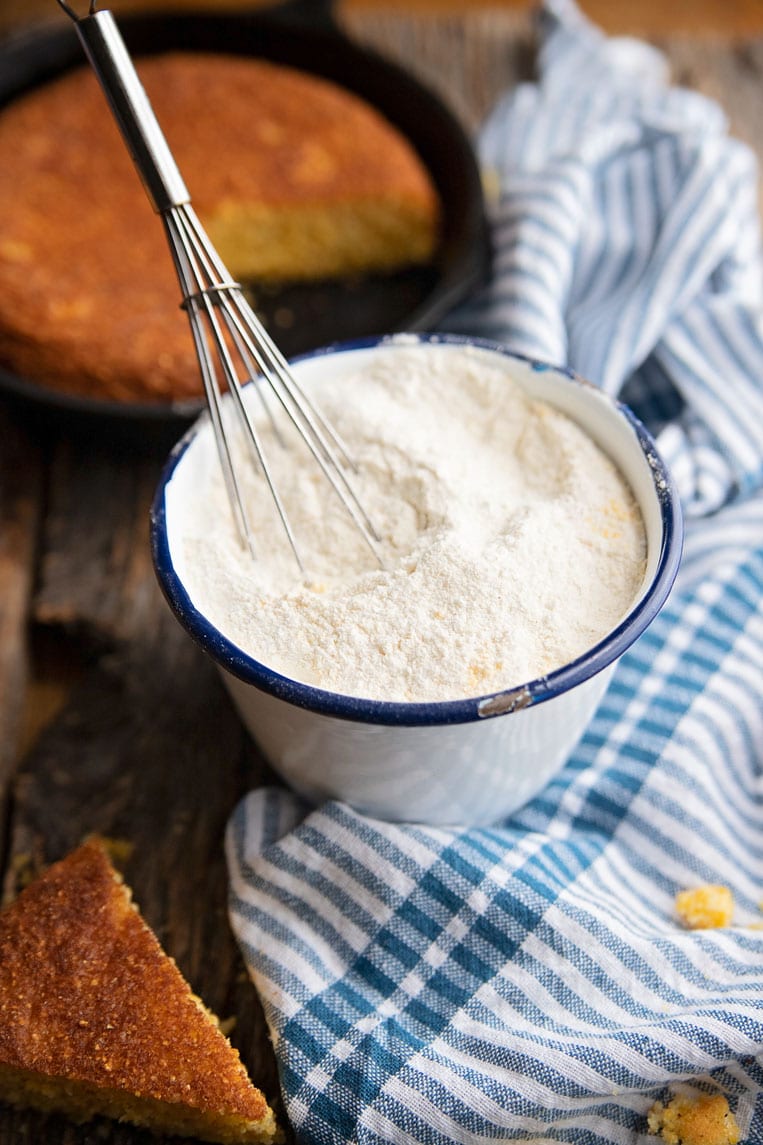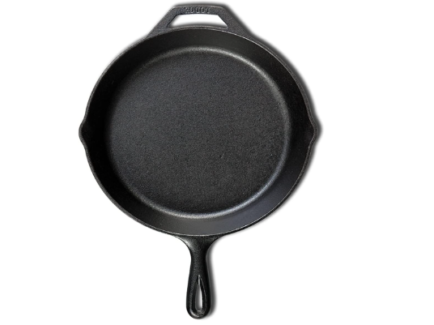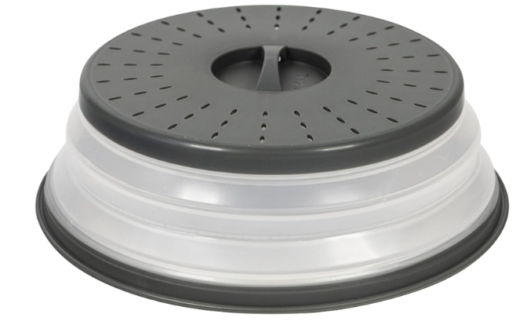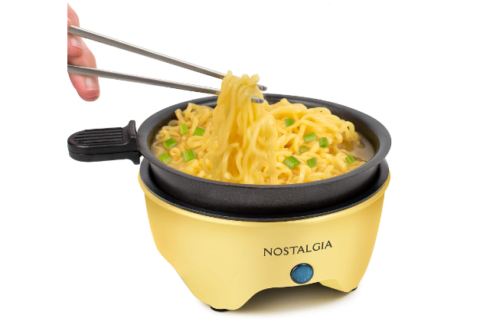
Self-rising cornmeal is a popular ingredient in Southern cuisine and is used in a variety of dishes, including cornbread, hushpuppies, and fried fish. Making self-rising cornmeal at home using a grain mill grinder can be a cost-effective and convenient option for those who use this ingredient frequently in their cooking.
Self-rising cornmeal is made by combining cornmeal with baking powder and salt. The baking powder serves as a leavening agent, which helps the cornbread rise as it bakes. Making self-rising cornmeal in a grain mill grinder allows you to control the quality and freshness of the ingredients, and can result in a better-tasting final product. In the following sections, we will explore the steps and tips for making self-rising cornmeal in a grain mill grinder.
What does self rising cornmeal look like?
Self-rising cornmeal looks similar to regular cornmeal, but it contains additional ingredients, including baking powder and salt. The baking powder serves as a leavening agent, which helps the cornbread rise as it bakes, while the salt adds flavor.
Self-rising cornmeal can have a slightly lighter color than regular cornmeal due to the baking powder, but this can vary depending on the brand and the specific recipe used. It may also have a slightly different texture or consistency, depending on the grain mill grinder used to process it.
Overall, self-rising cornmeal is easy to recognize by its label, which will typically include the words “self-rising” or “self-raising” on the packaging. If you’re making self-rising cornmeal at home using a grain mill grinder, you can expect it to have a similar appearance to regular cornmeal, but with the added ingredients of baking powder and salt.
Which kinds of self rising cornmeal can you make in grain mill grinder?
You can make various kinds of self-rising cornmeal in a grain mill grinder by using different types of cornmeal, baking powder, and salt. Here are some examples:
- White self-rising cornmeal: Made using white cornmeal, baking powder, and salt. It has a milder flavor than yellow cornmeal and is commonly used in Southern cuisine.
- Yellow self-rising cornmeal: Made using yellow cornmeal, baking powder, and salt. It has a more robust flavor than white cornmeal and is often used in dishes such as cornbread, hushpuppies, and fried fish.
- Stone-ground self-rising cornmeal: Made using stone-ground cornmeal, which is coarser than regular cornmeal and has a more pronounced corn flavor. It is often used in traditional Southern recipes and has a distinctive texture.
- Organic self-rising cornmeal: Made using organic cornmeal, which is grown without the use of synthetic fertilizers, pesticides, or herbicides. It is often preferred by those who value organic and sustainable farming practices.
Overall, the type of self-rising cornmeal you make in a grain mill grinder will depend on your personal preferences and the specific recipe you plan to use it in. With a little bit of experimentation, you can create a self-rising cornmeal that meets your specific needs and tastes delicious.
Why should you make self rising cornmeal in grain mill grinder?
Making self-rising cornmeal in a grain mill grinder can offer several advantages over using pre-packaged cornmeal:
- Fresher ingredients: When you make self-rising cornmeal at home using a grain mill grinder, you have greater control over the freshness and quality of the ingredients. This can result in a better-tasting final product.
- Cost-effective: Buying cornmeal and baking powder separately and making your own self-rising cornmeal can be more cost-effective than purchasing pre-packaged self-rising cornmeal.
- Customizable: Making self-rising cornmeal in a grain mill grinder allows you to customize the ratio of cornmeal, baking powder, and salt to your liking. You can also experiment with different types of cornmeal to achieve different flavors and textures.
- Convenience: Making self-rising cornmeal at home using a grain mill grinder can be a convenient option for those who frequently use this ingredient in their cooking. You can make a large batch at once and store it for later use.
Overall, making self-rising cornmeal in a grain mill grinder can be a simple and cost-effective way to create a high-quality ingredient that is essential in many Southern dishes.
How to make self rising cornmeal in grain mill grinder
Making self-rising cornmeal in a grain mill grinder is a straightforward process. Here are the steps to follow:
Ingredients:
- 2 cups of cornmeal
- 2 tsp of baking powder
- 1 tsp of salt
Equipment:
- Grain mill grinder
- Mixing bowl
- Spoon or whisk
Instructions:
- Set up your grain mill grinder according to the manufacturer’s instructions.
- In a mixing bowl, combine the cornmeal, baking powder, and salt. Use a spoon or whisk to mix the ingredients until well combined.
- Place the cornmeal mixture into the hopper of your grain mill grinder.
- Turn on the grain mill grinder and grind the mixture into a fine powder. The grinding time may vary depending on the power and speed of your grinder.
- Once the cornmeal mixture has been ground into a fine powder, transfer it back into the mixing bowl.
- Store the self-rising cornmeal in an airtight container or use it immediately in your favorite recipe.
Note: This recipe makes 2 cups of self-rising cornmeal. You can adjust the quantities based on the amount of cornmeal you need for your recipe.
Overall, making self-rising cornmeal in a grain mill grinder is a simple process that can result in a high-quality ingredient for your cooking needs. With a little bit of practice, you can create self-rising cornmeal that meets your specific taste preferences and yields delicious results in your recipes.
What can self rising cornmeal be used for?
Self-rising cornmeal can be used in a variety of recipes, particularly in Southern cuisine. Here are some common uses for self-rising cornmeal:
- Cornbread: Self-rising cornmeal is an essential ingredient in cornbread. It provides the necessary structure and rise to the bread, giving it a fluffy texture.
- Hushpuppies: These deep-fried cornmeal balls are a popular side dish in Southern cuisine. Self-rising cornmeal is used to give the hushpuppies their light and fluffy texture.
- Fried fish: Self-rising cornmeal is often used as the breading for fried fish. The cornmeal provides a crispy, flavorful coating that complements the fish.
- Casseroles: Self-rising cornmeal can be used as a thickening agent in casseroles and other baked dishes. It adds flavor and texture to the dish while also helping to bind the ingredients together.
- Coatings: Self-rising cornmeal can be used as a coating for a variety of foods, including chicken, pork chops, and vegetables. It provides a crispy, flavorful crust when baked or fried.
Overall, self-rising cornmeal is a versatile ingredient that can be used in many different dishes. Its unique texture and flavor make it a staple in Southern cuisine, but it can be used in many other types of cooking as well.
How long does it take to make self rising cornmeal in grain mill grinder?
The time it takes to make self-rising cornmeal in a grain mill grinder will depend on the power and speed of your grinder, as well as the amount of cornmeal you are grinding. However, the actual grinding process should only take a few minutes.
In general, the entire process of making self-rising cornmeal in a grain mill grinder, including measuring the ingredients and grinding the cornmeal, should take no more than 10-15 minutes. This is assuming that you have all the necessary ingredients on hand and that your grain mill grinder is set up and ready to use.
Once you have ground the cornmeal, you can store it in an airtight container for later use, or you can use it immediately in your recipe.
Tips for making self rising cornmeal in grain mill grinder
Here are some tips to help you make self-rising cornmeal in a grain mill grinder:
- Use fresh ingredients: To ensure the best results, use fresh cornmeal, baking powder, and salt. This will help to ensure that your self-rising cornmeal is of the highest quality and has the best flavor.
- Choose the right grind: The grind of your cornmeal can have a significant impact on the final texture of your recipe. If you prefer a finer texture, use a fine grind. For a coarser texture, use a medium or coarse grind.
- Measure carefully: Accurate measuring is essential when making self-rising cornmeal. Use measuring cups and spoons to ensure that you are adding the right amount of each ingredient.
- Use a high-quality grain mill grinder: A high-quality grain mill grinder can make a big difference in the quality of your self-rising cornmeal. Look for a grinder with a powerful motor, adjustable settings, and easy-to-use controls.
- Clean your grain mill grinder regularly: Make sure to clean your grain mill grinder after each use to prevent the build-up of residue and ensure that it continues to work effectively.
- Store your self-rising cornmeal properly: Store your self-rising cornmeal in an airtight container in a cool, dry place to prevent it from absorbing moisture and losing its flavor.
By following these tips, you can make self-rising cornmeal that is of the highest quality and has the best texture and flavor. With a little practice, you can become an expert at making self-rising cornmeal in your grain mill grinder.
Related Posts
Why Trust Us
You will find what you are looking for at Jody's Bakery. From classic to luxury brands, you'll find both. We will help you to select appliances that fit your needs, budget and lifestyle. Whether you want to stop by to learn more — or plan to make a major purchase — we’ll treat you like family and assist you every step of the way. Shop with us today to receive friendly and experienced help along the way.















… [Trackback]
[…] Info to that Topic: jodysbakery.com/how-to-make-self-rising-cornmeal/ […]
… [Trackback]
[…] Here you can find 76737 more Information to that Topic: jodysbakery.com/how-to-make-self-rising-cornmeal/ […]
… [Trackback]
[…] Read More Information here to that Topic: jodysbakery.com/how-to-make-self-rising-cornmeal/ […]
… [Trackback]
[…] Read More to that Topic: jodysbakery.com/how-to-make-self-rising-cornmeal/ […]
… [Trackback]
[…] Find More Information here to that Topic: jodysbakery.com/how-to-make-self-rising-cornmeal/ […]
Enjoyed every bit of your article.Thanks Again. Great.
I appreciate you sharing this blog article.Really looking forward to read more. Cool.
I value the post.Thanks Again. Great.
Enjoyed every bit of your blog.Much thanks again. Much obliged.
Thanks-a-mundo for the post.Thanks Again. Fantastic.
… [Trackback]
[…] There you can find 15737 more Information on that Topic: jodysbakery.com/how-to-make-self-rising-cornmeal/ […]
Thank you for your blog article.Really looking forward to read more. Really Great.
… [Trackback]
[…] Read More to that Topic: jodysbakery.com/how-to-make-self-rising-cornmeal/ […]
Awesome blog post.Thanks Again. Really Great.
Some genuinely fantastic info , Glad I detected this. “It’s not what you are that holds you back, it’s what you think you are not.” by Denis Watley.
Wow that was unusual. I just wrote an extremely long comment but after I clicked submit mycomment didn’t show up. Grrrr… well I’m not writing all thatover again. Anyway, just wanted to say excellent blog!
Wow, great article post.Thanks Again. Want more.
Thanks for the article.Much thanks again. Really Cool.
Thank you ever so for you blog article.Really thank you! Really Cool.
Awesome article post.Really thank you! Cool.
Hey, thanks for the blog article.Much thanks again. Will read on…
Im obliged for the article post.Thanks Again. Great.
Enjoyed every bit of your blog.
A big thank you for your blog post.Thanks Again. Really Cool.
I appreciate you sharing this article post.Much thanks again. Awesome.
Very neat blog.Thanks Again. Really Great.
Thanks to my father who shared with me about this blog,this blog is in fact remarkable.
I really enjoy the blog article.Thanks Again. Great.
Thanks-a-mundo for the blog article.Thanks Again. Want more.
wow, awesome blog.Really thank you! Will read on…
Looking forward to reading more. Great post.Thanks Again. Really Great.
Thanks a lot for the blog article. Awesome.
ivermectin dosage for guinea pigs edenbridge pharmaceuticals ivermectin
Very informative post.Really looking forward to read more. Great.
canadian pharmacy online orders walgreens pharmacy store locator
Say, you got a nice blog article.Really looking forward to read more. Will read on
Really enjoyed this post. Awesome.
… [Trackback]
[…] Info on that Topic: jodysbakery.com/how-to-make-self-rising-cornmeal/ […]
A round of applause for your blog article.Really thank you! Will read on…
I enjoy the efforts you have put in this, regards for all the great blog posts.
A big thank you for your post.Much thanks again.
Say, you got a nice blog.Really looking forward to read more. Keep writing.
Thanks a lot for the post.Much thanks again. Really Cool.
I think this is a real great blog article.Really looking forward to read more. Great.
Thanks a lot for the blog.Really looking forward to read more. Great.
Thanks so much for the post.Really thank you! Really Cool.
Really appreciate you sharing this blog article. Awesome.
Muchos Gracias for your blog article.Thanks Again. Really Great.
Really informative post.Really thank you!
What’s up, just wanted to say, I enjoyed this post.It was practical. Keep on posting!
treating ed rx online india – online canadian pharmacy
Awesome article.Really thank you! Will read on…
Your really own commitment to obtaining the message throughout came up to be rather strong and have consistently allowed employees just like me personally to realize their desired objectives.
singapore news north koreachannel news asia
I really like and appreciate your article post.Really looking forward to read more. Keep writing.
Major thanks for the blog post. Great.
Major thanks for the blog post.Thanks Again. Want more.
I needed to thank you for this fantastic read!! I absolutely loved every bit of it. I’ve got you bookmarked to look at new things you postÖ
Standing at the center back with Virgil van Dijk as before, with the right side Trent Alexander-Arnold ready to go as well as Alisson Becker in the goalkeeper position. Premier League In the event that if Henderson and Robertson pass fitness tests.
Thanks so much for the post.Much thanks again. Awesome.
A fascinating discussion is worth comment. I think that you ought to write more about this subject, it might not be a taboo subject but typically people don’t discuss such topics. To the next! All the best.
Really appreciate you sharing this article post.Much thanks again. Awesome.
Awesome blog post.Really thank you! Really Cool.
Really appreciate you sharing this blog article.Really looking forward to read more. Really Cool.
Really enjoyed this blog article.Much thanks again. Keep writing.
I value the blog.Really thank you! Want more.
A round of applause for your blog article. Really Cool.
Thanks-a-mundo for the article post.Thanks Again. Fantastic.
wow, awesome post. Cool.
I really liked your article.
That is a very good tip particularly to those new to the blogosphere. Simple but very precise informationÖ Many thanks for sharing this one. A must read post!
This piece of writing presents clear idea in support of the new visitors ofblogging, that in fact how to do running a blog.
I like the valuable information you provide in your articles. I?ll bookmark your blog and check again here regularly. I’m quite certain I?ll learn many new stuff right here! Good luck for the next!
Good day! Do you know if they make any plugins to protect against hackers? I’m kinda paranoid about losing everything I’ve worked hard on. Any suggestions?
Thank you, I have recently been looking for information about this topic for a while and yours is the greatest I’vediscovered so far. However, what concerning the conclusion? Areyou certain about the supply?
Hello, you used to write magnificent, but the last several posts have been kinda boring I miss your great writings. Past several posts are just a little bit out of track! come on!
Howdy! I just wish to offer you a big thumbs up for the excellent information you’ve got here on this post. I’ll be coming back to your blog for more soon.
Thanks so much for the article.Thanks Again. Much obliged.
Fantastic blog post.Thanks Again. Want more.
ขั้นแรกผมว่าเว็บไซต์ไหนก็เหมือนกัน เหตุเพราะเข้าไปก็เจอเกมเดิมๆแม้กระนั้นเอาเข้าจริงๆมันแตกต่างกันขอรับ ยิ่งเว็บไหนที่เวลาฝากถอนควรต้องผ่านพนักงานอันนี้ผมรังเกียจสุดเลย เสียเวล่ำเวลา ส่วนตัวผมว่า UFABET ดีสุดเลยครับ เค้าใช้ระบบอัตโนมัติ
kamagra pills: order erectile dysfunction pills online top erectile dysfunction pills
metformin er500 metformin er500 is metformin safe
Really informative post.Really looking forward to read more. Much obliged.
Really informative article. Awesome.
Post writing is also a excitement, if you be acquainted withafterward you can write otherwise it is difficult to write.
Aw, this was an exceptionally nice post. Spending some timeand actual effort to create a great article…but what can I say… I hesitate a whole lot and don’t manage to get nearly anything done.
Thanks again for the article post. Really Great.
I am so grateful for your article post.Really thank you! Want more.
Im grateful for the article post.Really looking forward to read more. Really Great.
There is noticeably a bundle to know about this. I assume you created specific nice points in functions also.
We are looking for experienced people that might be interested in from working their home on a full-time basis. If you want to earn $500 a day, and you don’t mind creating some short opinions up, this might be perfect opportunity for you!
apartments in albany ny brooklyn apartments for rent hurstbourne grand apartments
Awesome article.Really thank you! Will read on…
I really like and appreciate your article.Much thanks again. Fantastic.
I’d need to examine with you here. Which isn’t something I often do! I take pleasure in reading a post that can make individuals think. Also, thanks for permitting me to comment!
I really appreciate this post. I have been looking everywhere for this!Thank goodness I found it on Bing. You have made my day!Thanks again!
Terrific facts. Appreciate it!how to write persuasive essay essay writing scholarships custom speech writing services
Muchos Gracias for your blog.Thanks Again. Cool.